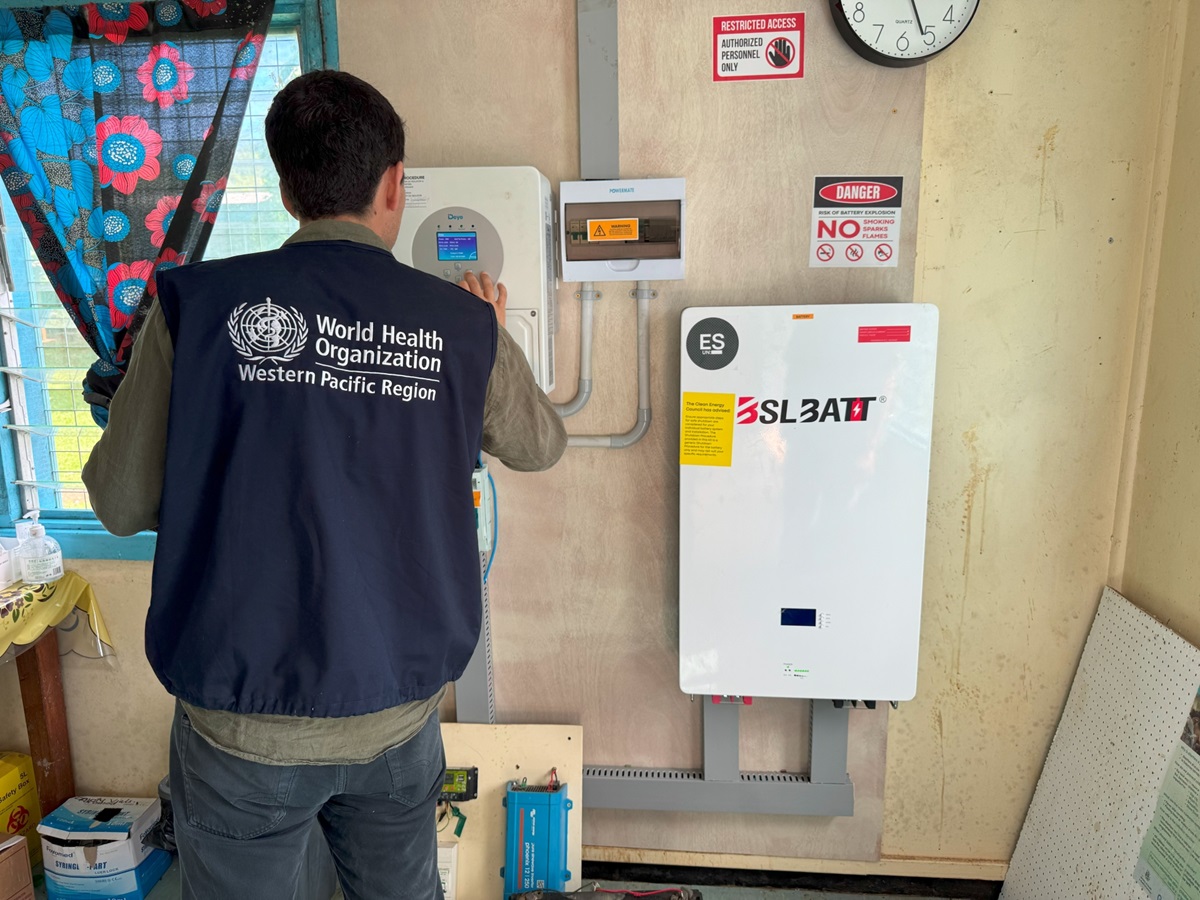
Bringing light to life: Transforming health care in Solomon Islands through solar power
How did your country report this? Share your view in the comments.
Diverging Reports Breakdown
Bringing light to life: Transforming health care in Solomon Islands through solar power
The solarization project is aimed at reducing malaria incidents. It enables health facilities to offer additional healthcare delivery benefits to communities. To date, seven health facilities have already been solarized. By March 2026, it is anticipated that malaria incidence will be reduced by 25% due to the outcomes of interventions being implemented in northern Guadalcanal Province, which includes Honiara City and the Marara and Grove health zones. The upgrade has not only improved working conditions for staff, but it has also restored confidence among the local population. “Without light, people had to wait until the next day, even if someone was very sick,” says nurse Francisca Rongolua. What was once a struggling health outpost has now become a beacon of health and safety, thanks to the solarized project. The project was made possible by the generous support of the people and Government of Japan, in partnership with the Ministry of Health and Medical Services (MHMS) and the World Health Organization (WHO)
In the quiet hills of rural Solomon Islands, where electricity was once a luxury, and health workers relied on torchlight and kerosene lamps to treat patients at night, a remarkable transformation is taking place.
Thanks to the generous support of the people and Government of Japan, in partnership with the Ministry of Health and Medical Services (MHMS) and the World Health Organization (WHO), a remote health facility previously without electricity is now powered by the sun. The solarization project, aimed at reducing malaria incidents, now enables health facilities to offer additional healthcare delivery benefits to communities.
The SBD 6,880,173 (USD 830,437) grant provided by the Government of Japan aims to prevent unnecessary deaths and mitigate the impact of malaria morbidity resulting from disruptions and neglect in the delivery of essential health services.
WHO Technical Officer Mr Vasco Carvalho explaining how the solarization works. Photo WHO/R. Serrano
By March 2026, it is anticipated that malaria incidence will be reduced by 25% due to the outcomes of interventions being implemented in northern Guadalcanal Province, which includes Honiara City and the Marara and Grove health zones. This area represents 35% of the population of Solomon Islands and 35% of the reported national malaria cases for 2023. To date, seven health facilities have already been solarized. Indeed, the newly installed solar power system not only brings light to clinics but also hope to the people.
“Before, we didn’t have any proper lights — even during procedures,” says Andrew Chela, Turarana Health Clinic’s nurse manager. “We had to use torches or ask patients to bring their small solar lamps during deliveries. That’s how we managed.”
For years, the clinic operated under challenging conditions, providing vital services in darkness or under flickering torchlight. But in just the two weeks since solar panels were installed, Andrew and his team have seen a dramatic shift.
“Now we have suitable lighting. We can do deliveries properly, we can serve more patients for longer hours,” he says with a grateful smile.
The upgrade has not only improved working conditions for staff, but it has also restored confidence among the local population. “The patients are happy now. They feel more confident to be admitted. Previously, they were apprehensive due to the darkness. But now, they’re no longer hesitant.”
WHO Representative in Solomon Islands, Dr Howard Sobel observes a routine check-up carried out by Nurse Manager Andrew Chela. Photo: WHO/R. Serrano
Mevalyn Pelrua expressed gratitude for the solarization of the clinic, as it will now be able to provide longer service hours to patients like her, a sentiment echoed by nurse Francisca Rongolua.
“Without light, people had to wait until the next day, even if someone was very sick. But now, even if people are sick at night, they can come,” Francisca said. “The light makes everyone feel safer.”
Francisca explained that, before the solar system was installed, clinic hours were limited, and the number of patients was low. “But now, because of the light, more people are coming. Even at night. There have been many more admissions.”
Evenings that once brought doubt now bring reassurance. Health workers can safely treat emergencies after dark, and babies are now delivered in well-lit rooms. What was once a struggling health outpost has now become a beacon of health and safety, thanks to the solarization project.
Andrew expressed heartfelt appreciation to the partners who made this possible. “On behalf of myself and the community, we are so grateful. Thank you, Japan and WHO. What we’ve long been hoping for — you made it happen.”
Francisca affirms Andrew’s sentiment: “As a nurse, I’m very thankful, on behalf of the community, on behalf of my people. I’m very happy indeed about what you provided to us. Thank you very much.”
Nurse Francisca Rongolua is very thankful for the solarization project made possible by the people and the Government of Japan. Photo: WHO/R. Serrano
The solarization project has been implemented in health clinics located in Marara and Grove health zones. Plans are in place to include satellite connectivity and provide tablets to health workers for DHIS2 patient-based reporting.
“Reliable electric supply will transform the way health facilities provide services, and collect, store, and use health data, said Mr Vasco Carvalho, Technical Officer, WHO Solomon Islands country office. “The solar power system in place can potentially improve the accuracy, efficiency, and ultimately, the quality of care being provided to patients.”
Thanks to the solarization project, community members will soon be able to enjoy reduced malaria cases in their community, as well as enhanced healthcare delivery—allowing them not only to survive but also to thrive.
